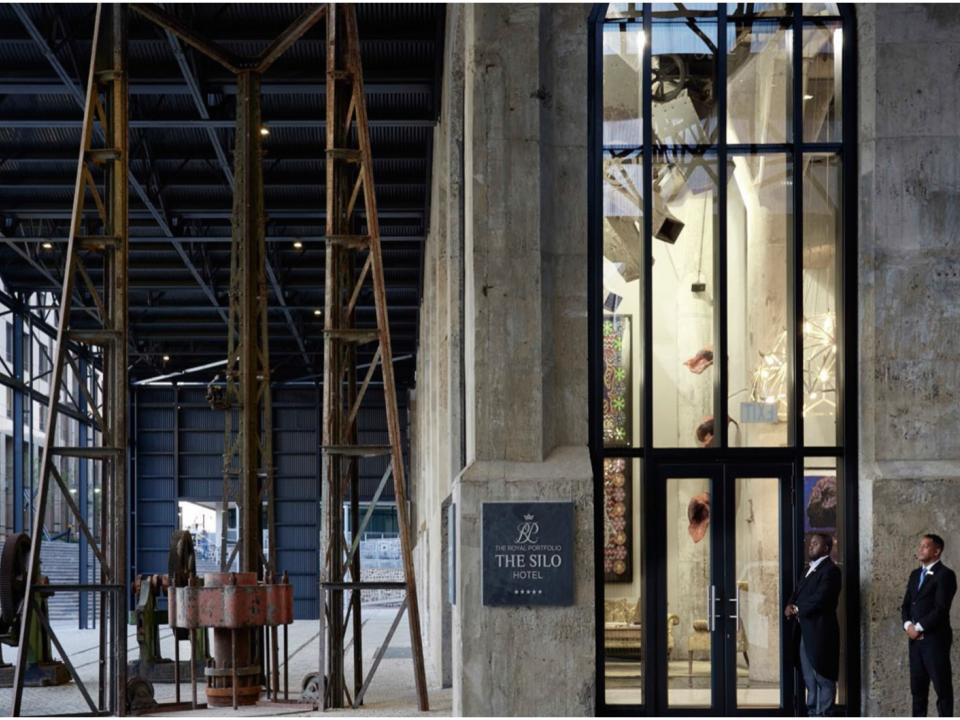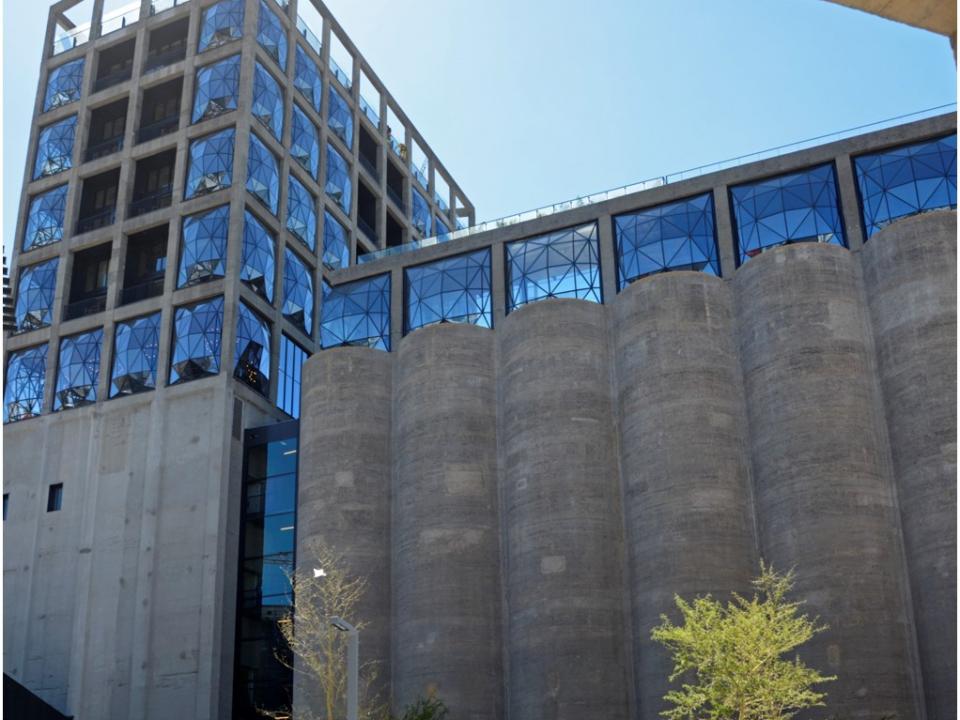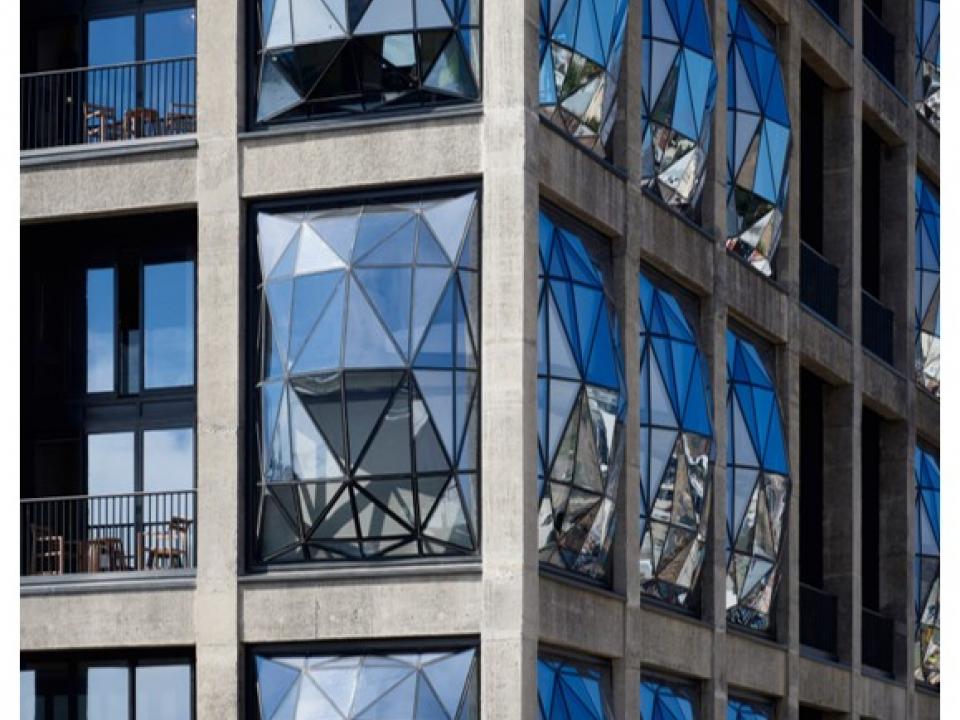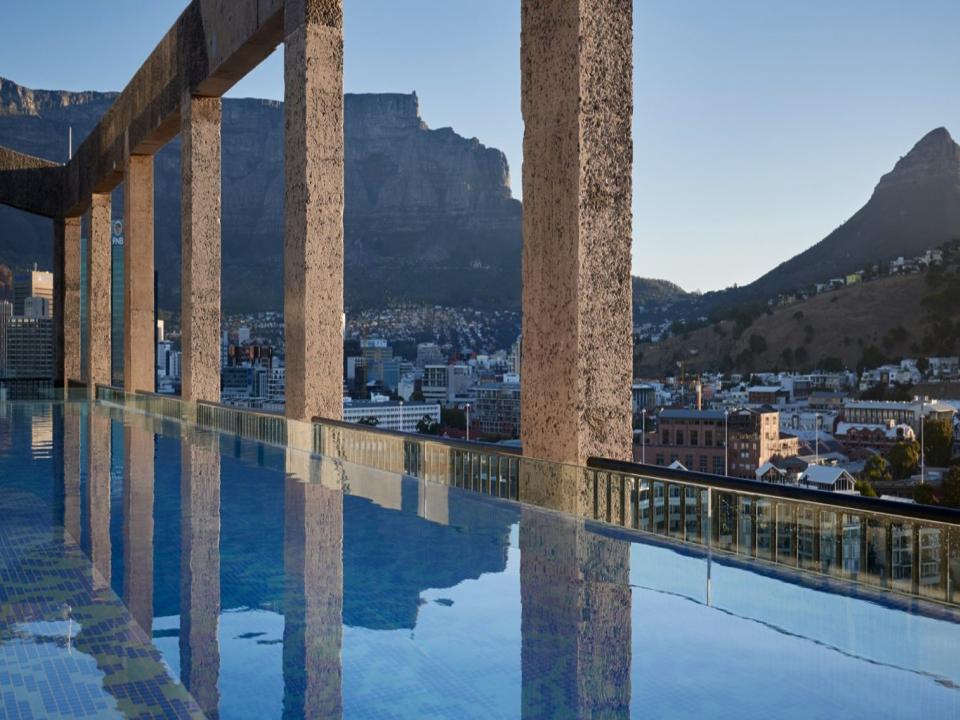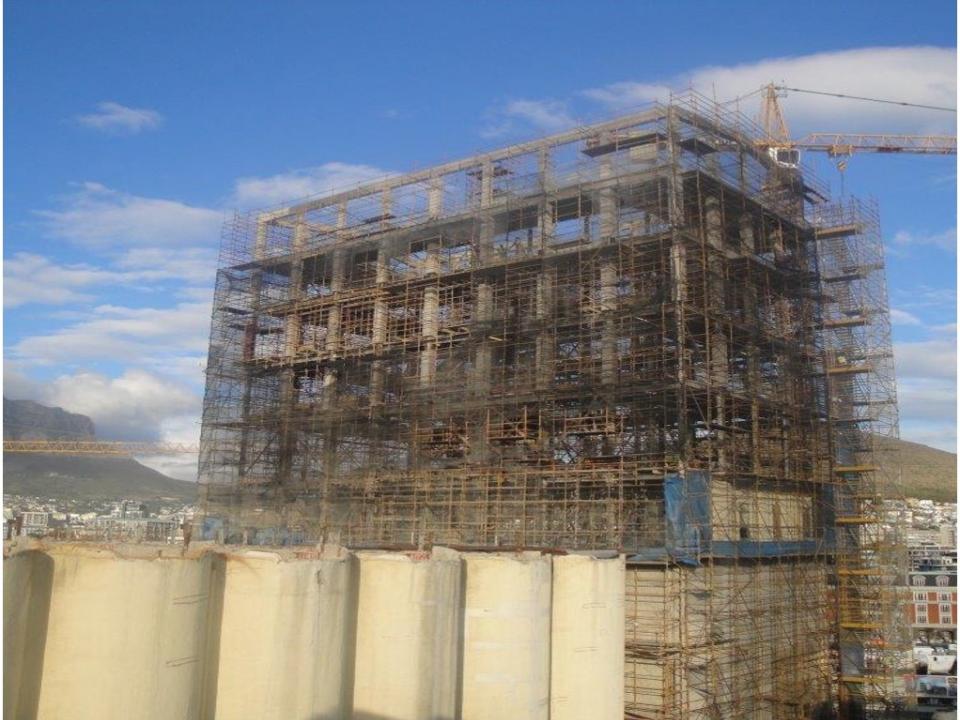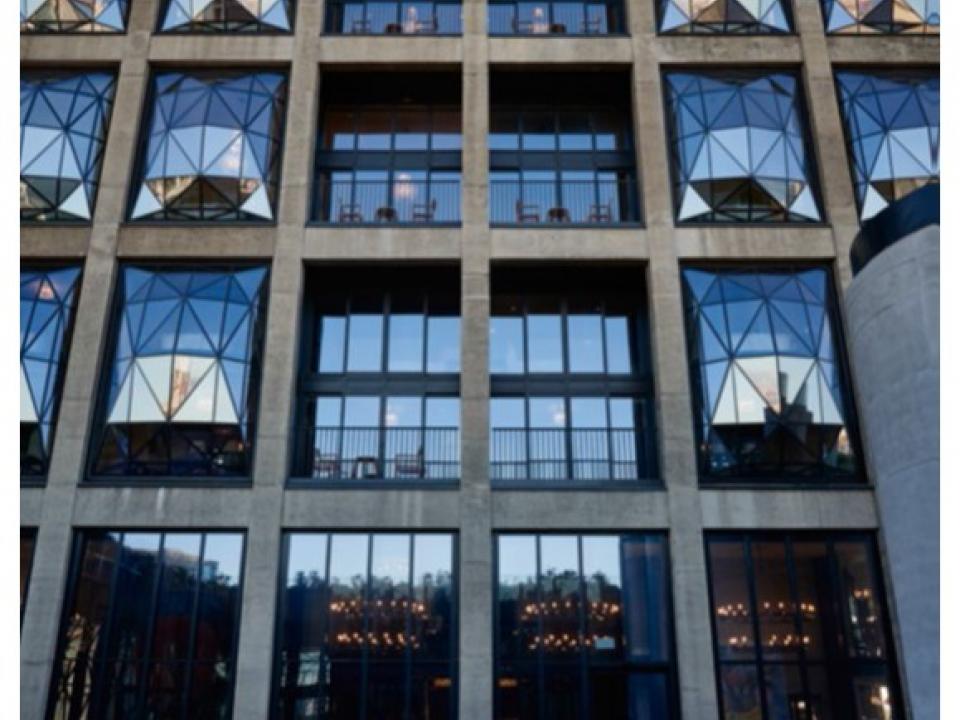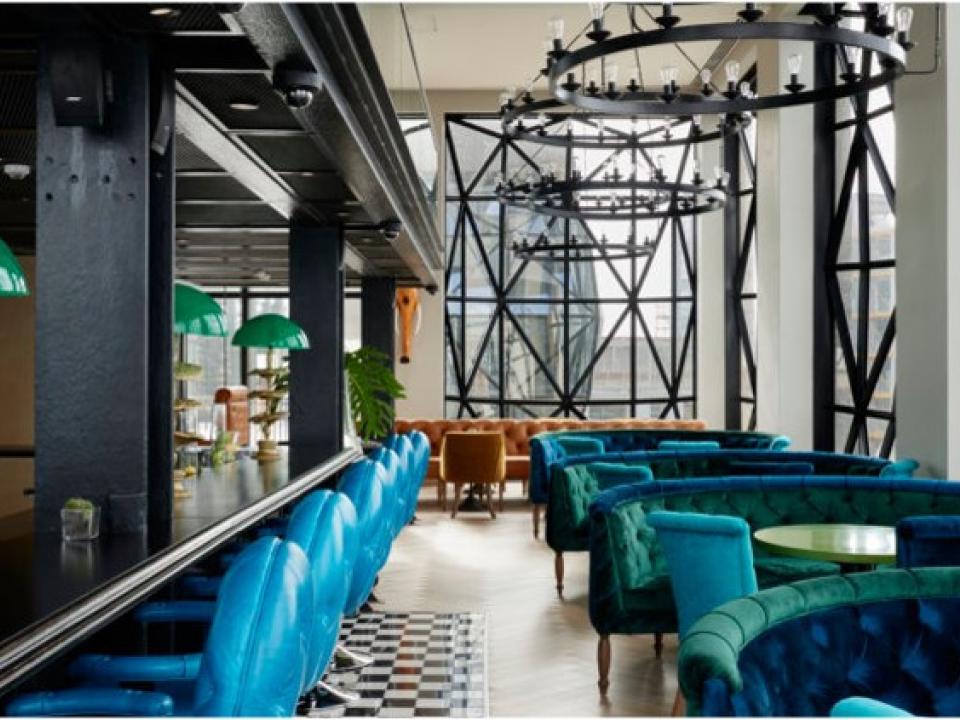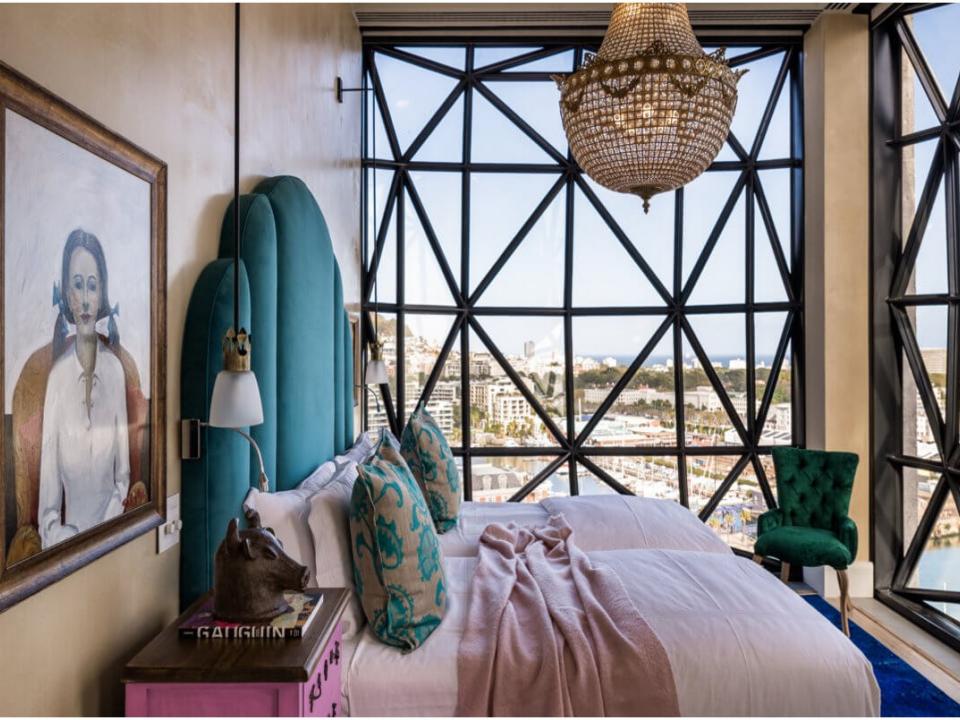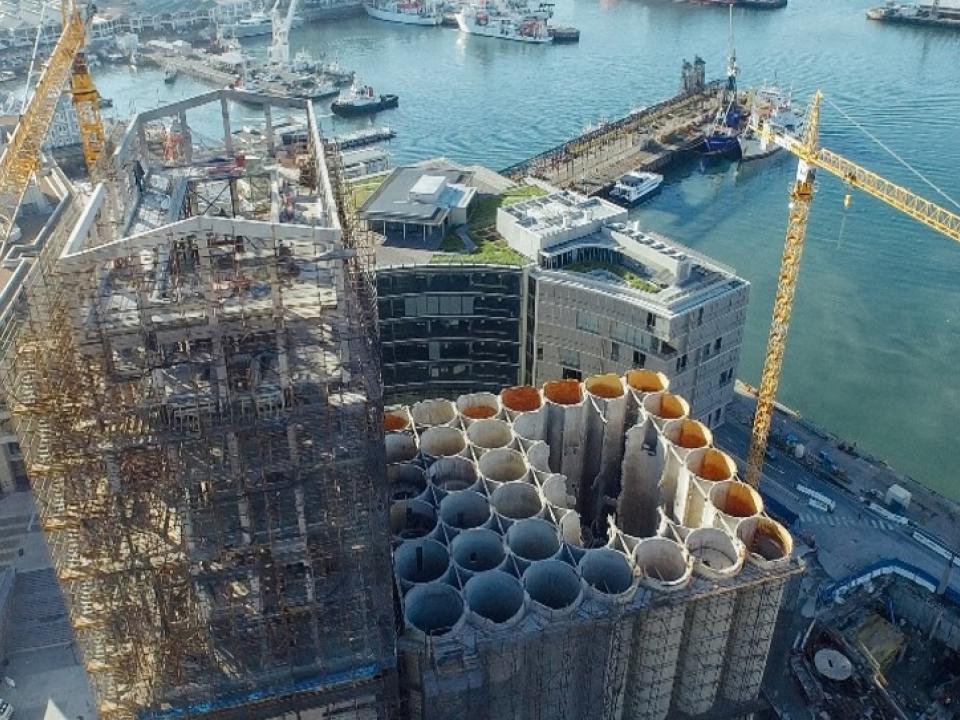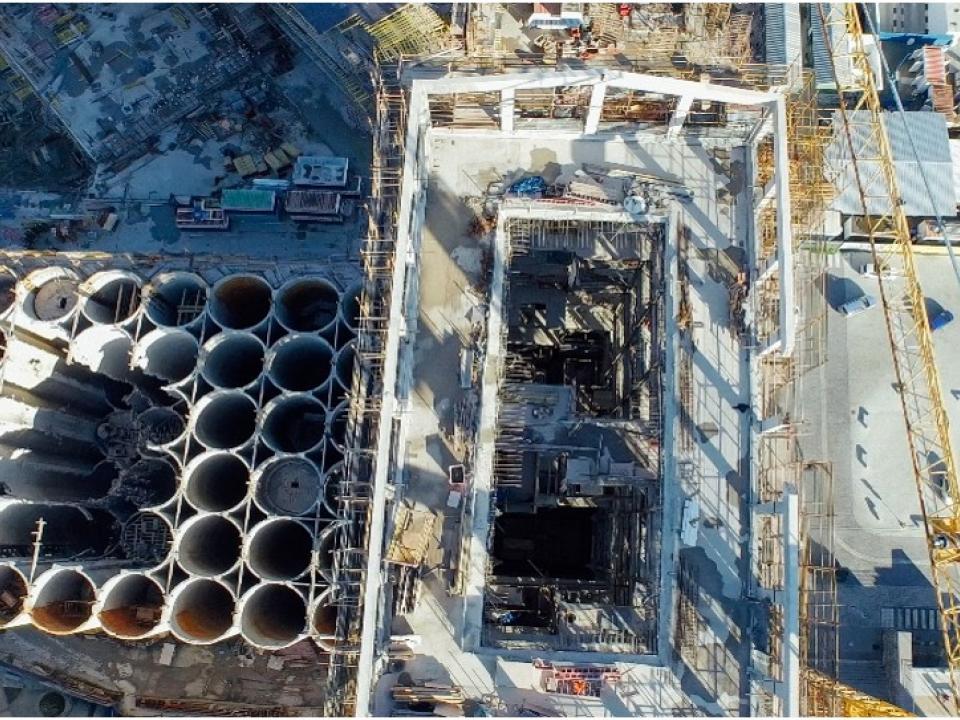Project description
An extraordinary hotel setting a new standard in luxury travel with nothing quite like it in the Cape Town city skyline. Built in 1924 the grain silos where the tallest building in Sub-Saharan Africa at 57m and played an integral role in terms of international trade as an export facility. Having undergone major renovations, the concrete tubular structure with it unusual glass-bubble façade, is a now a towering landmark enhancing its iconic past. The magical Silo Hotel has been built in the grain elevator portion of the historic grain silo complex occupying six floors above Zeitz MOCAA (Museum of Contemporary Art Africa). The transformation from grain storage into luxury hotel is exceptional and has provided a “project of a lifetime” for the professional and contracting teams. The unique architecture of the silo resulted in rooms that are more spacious vertically than horizontally. By night this transforms the building into an illuminating beacon in the harbor
Contractor
Scheltema
For over 80 years Scheltema has been a leading provider of roofing, ceilings and partitioning in Southern Africa. Much of the success of the company can be attributed to its passion for building, pride in its work, and commitment towards building strong relationships in the marketplace. The result is a powerful and streamlined organization, and extended supply chain, that effectively integrates staff, customers and suppliers. Numerous relationships span generations. Scheltema & Co was founded by Cornelius Scheltema in 1931. It began as a trading company, importing Dutch clay roofing tiles from premises in Strand Street, Cape Town (at a princely monthly rental of 3 pounds and 10 shillings). Before long, demand for the company’s products and services led to the establishment of what is arguably the oldest roofing and ceiling contracting company in Southern Africa. Scheltema grew from strength to strength, contributing to some of the Mother City’s most prominent buildings – Groote Schuur, The Red Cross Children’s Hospital, The State President’s residence, Huguenot Building and the Supreme Court, amongst others.
Key Achievements
- The method of creating space by stripping parts of a building away was a new but welcome challenge for all involved. Because this project involved part deconstruction and part archaeology all teams had to work in collaboration to bring their experience and expertise into the finished hotel.
- The teams had to ensure that the building adequately reflects its history and surroundings, so designed the building around what was already there. This was done by chipping away at the original structure, revealing its bones and carving out spaces within the original building to show its history.
- Designing with the existing frame in mind resulted in bulging 56-panel windows which are a visual interpretation of the immense pressure of the grain that once filed the silos.
- Gyproc products are made using less water at factory level and require no water on site, which was a meaningful advantage considering the drought in the Western Cape region.
- The time and money-saving benefits of drywall construction were highlighted and there was a 17.5% structural cost saving as well as a significant time-saving component resulting in the project being completed three months earlier than anticipated.
- Specifying the right materials for this extraordinary luxury hotel resulted in an end-product which is not only sustainable but encompasses the safety and comfort features it sets out to achieve.
Key Challenges
The renovation and repurposing of the building, whilst respecting its heritage; soul and structure provided countless challenges.
Acoustics and light were the dominating elements in this project.
The design had to provide an excellent level of acoustic performance in a challenging large open plan structure with high windowed ceilings. A combination of acoustics, sound absorption and light was required and there was particular emphasis on architecture and functionality to meet the rigorous project standards.
Specifically, the services specifications with push button window blinds, placed behind the bulkheads required intricate installation.
Plastering at height provided a challenge which resulted in slow installation and additional safety considerations.
Due to the nature of the grain silo the access to the historical site, with one goods lift, made material supply and removal timeous and awkward at times.
